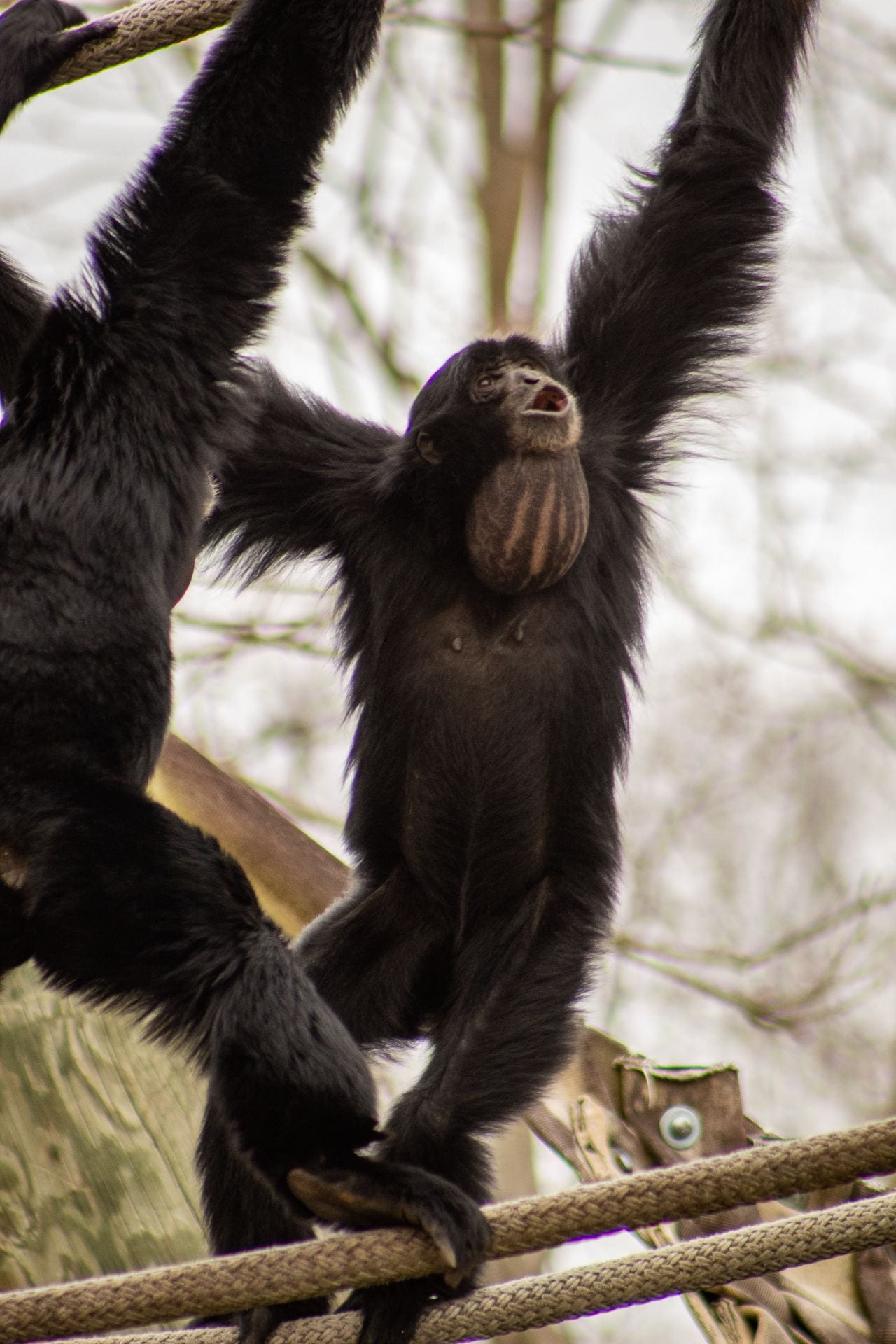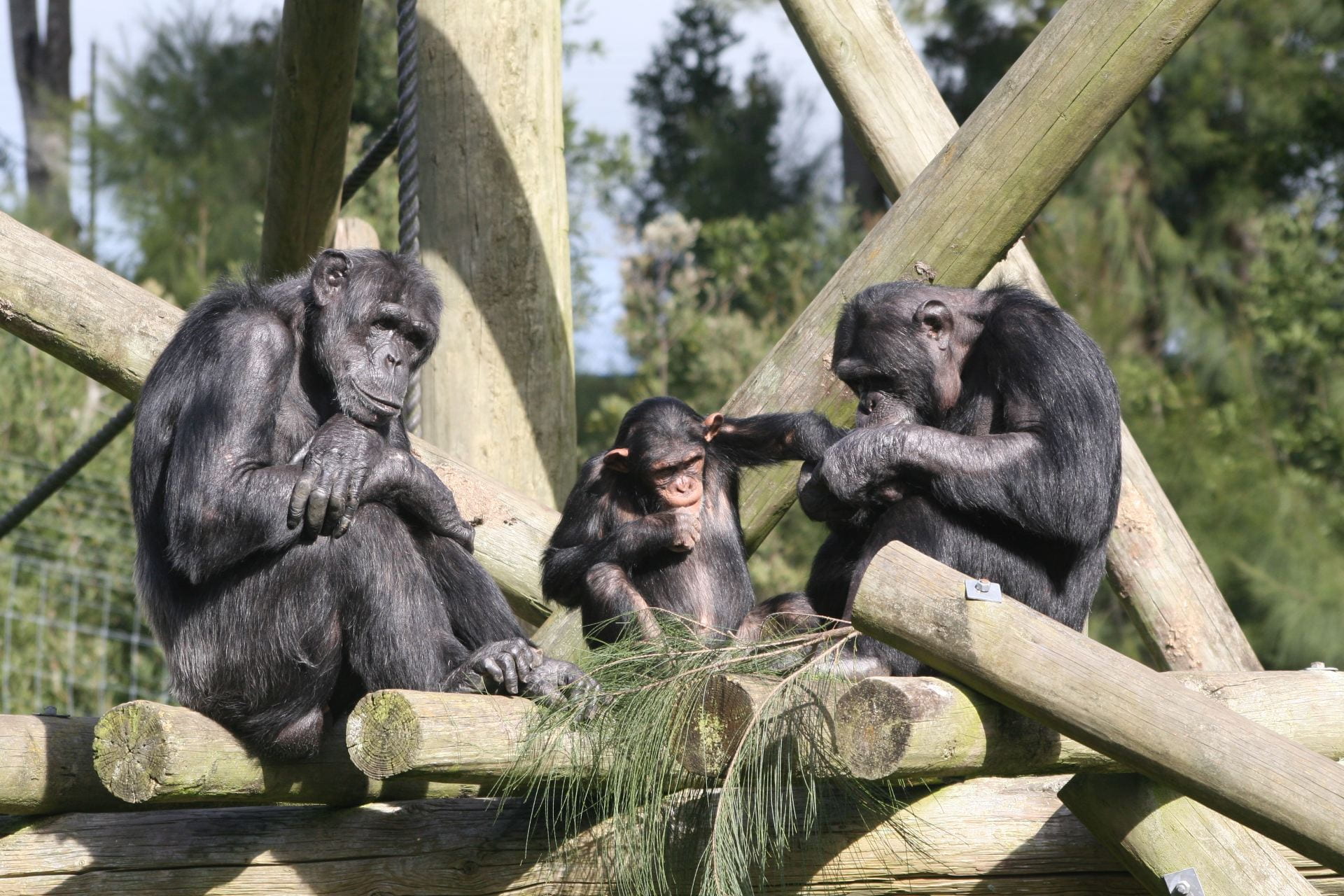Comparative Research Approach
We study select topics pertaining to cognition and conspecific communication in primates. Our recent research focuses on understanding the evolutionary roots of motor planning. Initially this project demonstrated that nonhuman primates, like human adults, were capable of second order motor planning (i.e., planning grasping postures based on upcoming intentions rather than just affordances). More recently, we have begun to investigate whether nonhuman primates exhibit similar choices as humans in their action sequences. Our primary interest is determining whether the biases that influence production choices in language may have evolutionary antecedents in production choices in the motor domain. Though we are not currently conducting research on site, we are continuing to collaborate with other labs on this research.
Comparative Language and Communication Research
One of the longstanding debates in the study of language has been whether acquisition requires specialized mechanisms or whether it is supported solely by generalized auditory mechanisms. In effort to resolve this issue, over the course of the last 25 years many researchers have adopted a comparative approach, comparing the performance of nonhumans and humans on a variety of speech perception tasks that are fundamental to language development.
Comparative Motor Research
This line of research began with a collaboration with David Rosenbaum, an expert on the psychology of human motor control. Over the last several years we have been investigating motor planning, specifically focusing on second order motor effects. Our study has shown that, like humans, tamarins can accommodate future positions or postures by altering their initial movements. We have also demonstrated this effect in several lemur species (in collaboration with a lemur conservation facility). Since the initial findings, we have also found perseverative effects of motor behavior (i.e., hysteresis effects) and planning for repeated sequences of actions.

